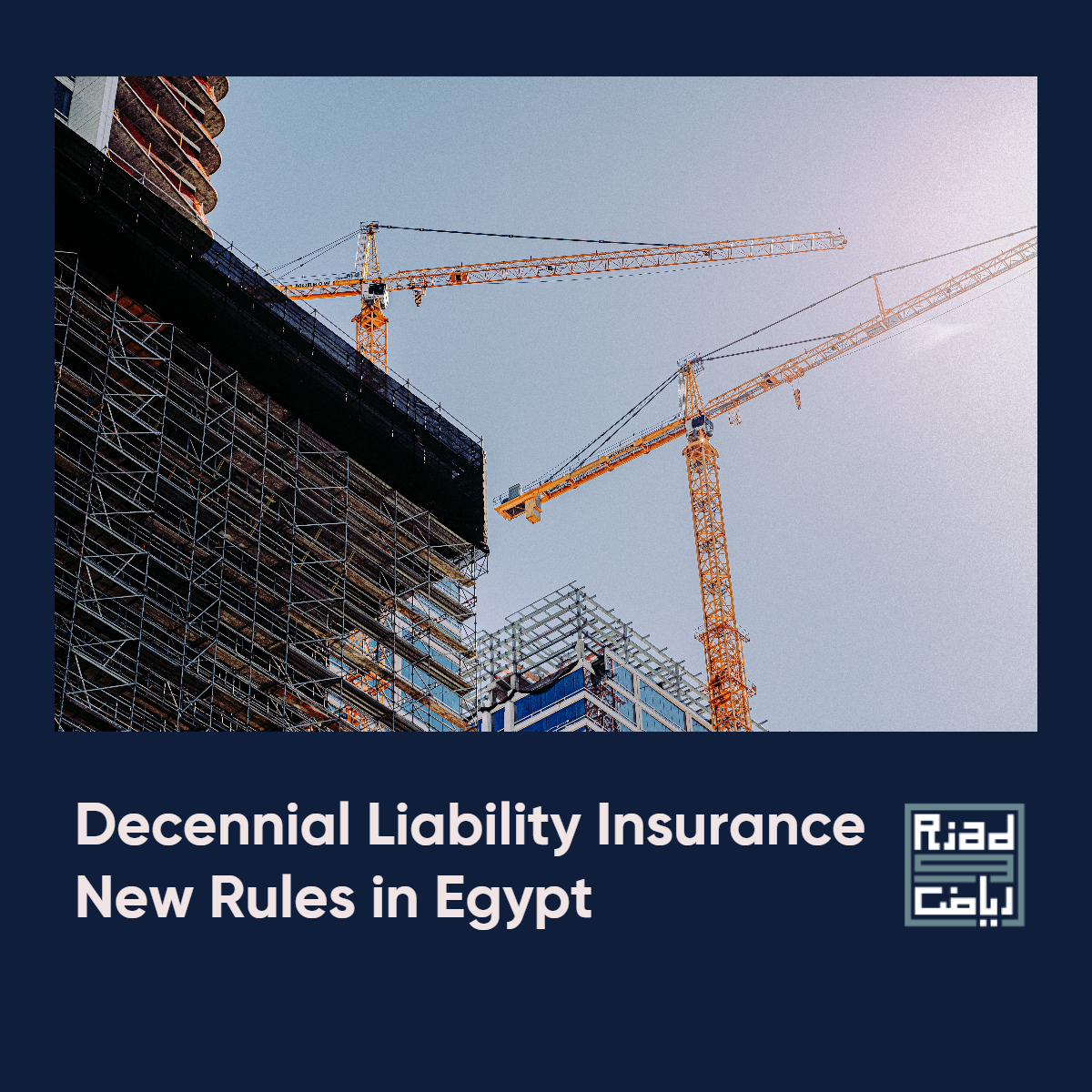
Decennial Liability Insurance – New Rules in Egypt
What is Decennial Liability?
The Egyptian legislator adopted the concept of decennial liability. It is a ten years liability imposed on contractors and architects/engineer, jointly and severally for:
- any total or partial collapse of the building, and
- defects that threaten the safety and durability of the building.
The decennial liability is a strict liability, i.e., the warranty applies even if the collapse results from defects in the soil itself or that the employer approved the defects. It is also mandatory provision of the law and therefore cannot be limited or waived by agreement of the parties. Any provision in the contract to restrict or waive the warranty will be void.
The duration of the decennial liability is ten years starting from the date of handing over the building. This is unless the building was not intended to last for ten years.
Bringing a claim for decennial liability is time barred after the lapse of three years from the date of the collapse or the discovery of the defect.
Decennial liability does not apply to subcontractors. The main contractor takes responsibility for the actions of its subcontractors. Contractors therefore are advised to require an indemnity from the subcontractors in respect of any liability that it incurs due to their work.
Mandatory Decennial Liability Insurance
Having a decennial liability insurance policy is mandatory in Egypt since 1976 by the issuance of the old Building Law No. 106/1976, and it has been confirmed and continued under the current Building Law No. 119 for 2008 (“Building Law”).
Article 46 of the Building Law provides that no building permits will be issued until a decennial liability insurance policy is issued, and owners are mandated to suspend the works if the insurance coverage is terminated for whatever reasons.
Decennial liability insurance is required whenever:
- the value of the construction works exceeds EGP 1 million;
- the work relates to a building comprises of more than four floors; or
- the work relates to raising the height of a building whatever its value.
New Regulations for Construction Liability Insurance
The Prime Minister of Egypt issued Decree 3194 for 2022 on 6 September 2022 detailed rules regulating the insurance against construction works liability under the Building Law (“Regulations”).
Who is the Insurer?
The Regulations provides that the Egyptian Consortium for Insurance against Civil Liability for Construction Works Risks (“Consortium”) will be the insurer.
The Building Law mandates the insurer to review the designs and follow up the implementation of the work. The Consortium was established in 2003 to carry out such mandate on behalf of the member insurance companies. According to its statutes, the Consortium is competent to:
- Review and certify the architectural and structural designs and drawings of the construction projects for the purpose of issuance of the insurance policy against construction works risks required under the Building Law.
- Manage the construction works liability insurance on behalf of the insurers including issuance of the insurance policy and payment of the compensation.
- Collect the insurance premium and the other fees, expenses and taxes on behalf of the receiving entities.
- Supervising the construction work through site visits to ensure that the works are in compliance with the certified drawings and designs.
- Studying compensation requests submitted by the insured parties and decide the due compensation amount according to the insurance policy.
Who are the Insured?
According to the Regulations, the insured are:
- the engineer/ architects and/or the contractor.
- Owner of the building
Who are the beneficiaries?
Third parties who incur damage due to the defects or collapse of the building. The project’s engineer, the architects, the implementing contractors and their employees are not considered among the third-party beneficiaries.
How much is the premium?
The premium will be in the amount of 0.2% of the value of the building.
The premium of projects with special nature can be decided on the basis of the maximum potential loss. Projects with special nature will be decided by virtue of a decision from the Minister of Housing.
What does the insurance cover?
The insurance policy will cover the liability of the contractors and architects/engineer against third party (a) during the implementation phase and (b) during the decennial liability period.
The law put a cap of EGP two million for one incident and EGP 100,000 for one injured person.
What is excluded?
- Damage incurred to the materials and equipment with the engineers or contractors for the purpose of implementing the works.
- Third party claims against the engineers or contractors based on contractual liability.
- Indirect and consequential damage.
- Damage resulting from force majeure events.
Subrogation and recourse
In the event that an insurer pays for damages of the insured, the damages claim that the insured had towards the third party transfers to the insurer, as a consequence of which the insurer, in his own name, can take recourse to the party that caused the damages.
The insurer will have the right to recourse against the insured in case the damage claim of the third party is a result of the insured breach of the term of the insurance policy, its fraud, gross negligence or willful misconduct.
Transfer of the insurance policy
The insured may not assign or transferred the insurance policy to a third party unless it obtains the written consent of the insurer.
Cancellation of the insurance policy
Neither the insurer nor the insured are allowed to cancel the insurance policy unless the construction permits are terminated by the competent authority.
